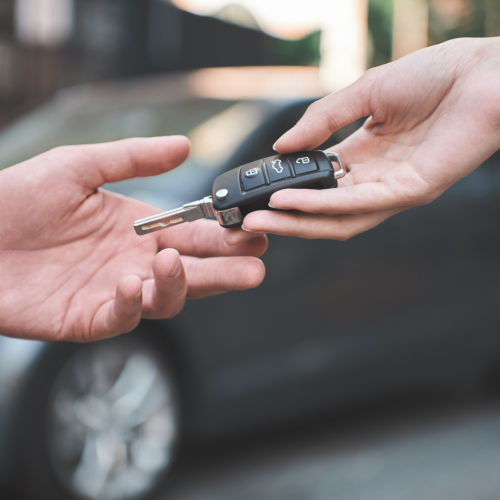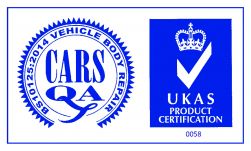Returning a leased vehicle
 The benefits of leasing a vehicle are many and one of the more attractive lures is, that at the end of the lease, you can just hand the car back and lease a new one. No worries about value depreciation or selling on. But hold on. Because even before you pull off the forecourt at the beginning of the lease, in order to get the best out of your deal, you need to have the terms of your contract firmly at the forefront of your mind, or it could cost you dear.
The benefits of leasing a vehicle are many and one of the more attractive lures is, that at the end of the lease, you can just hand the car back and lease a new one. No worries about value depreciation or selling on. But hold on. Because even before you pull off the forecourt at the beginning of the lease, in order to get the best out of your deal, you need to have the terms of your contract firmly at the forefront of your mind, or it could cost you dear.
The legal position at the end of your lease
At the end of your lease, your vehicle will be collected and inspected. The inspectors are primarily looking for three things: wear and tear, damage and mileage.
Wear and tear
If your vehicle has over and above wear and tear you may lose any security deposit you paid at the beginning of the lease and or face extra charges. The BVRLA is a Government organisation that provides consumer alternative dispute resolution between leasing companies and individuals. More importantly, the BVRLA have a Fair Wear and Tear Guide which provides an industry standard for every aspect of a vehicle's condition on return.
You can and should request a copy of the guide from your leasing company either at the beginning of your lease, so you know what to expect, or a few months before you return the vehicle so you can inspect the vehicle yourself and ensure anything you think may not be considered fair wear and tear is rectified.
Do bear in mind, any repairs should be properly done by a reputable repairer who can provide a warranty that can be transferred to the leasing company and beyond (remember, the leasing company may sell the vehicle on).
What is fair wear and tear?
Fair wear and tear is the impact on the vehicle of normal use, i.e. how worn the interior, exterior or engine is. The BVRLA guide provides a long list of what will be taken into account during a wear and tear inspection and this includes (but is not limited to):
General appearance, road safety, documentation, keys
This is the top level, obvious stuff. The vehicle should be roadworthy, with everything working and no lights flashing on the dashboard. It should be clean inside and out and free of rust or erosion. Most leasing companies require it to be refuelled or recharged.
The vehicle should be in a suitable condition to pass an MOT, so think about brakes, any engine damage, gearbox, clutch, problems with the doors or windows and catalytic converters.
Safety compliant
The vehicle should have a full-service history in line with the manufacturer’s recommended servicing schedule.
Documentation and keys
You need to provide all the necessary paperwork including the Vehicle Registration Document, any MOT, service book, operator’s manual, etc. You should return all the keys you were supplied with, including any spare key, locking wheel-nut keys and remote control locking system controls. They should be in good working order.
Your vehicle’s exterior - paintwork, body, bumpers, trim, mirrors and windows
Your lease vehicle will be subjected to close scrutiny by an expert. They will be looking for chips, scratches, flaking or rusty paint, dents or poorly done repairs.
Not every chip will put you on the wrong side of fair wear and tear, but it will depend on the amount of repair work involved to remedy it. Scratches less than 25mm are not normally a problem (depending how old the vehicle is) unless it’s a really deep scratch which has exposed the metal. Similarly, small dents of up to 10mm are usually acceptable unless there are more than 2 per panel.
Car stickers will need to be professionally removed. Chips, cracks and holes in the windows or windscreen are normally considered above normal wear and tear, even if a chip has been repaired chip but is in the driver’s line of sight.
Tyres and Wheels
All tyres must meet UK legal requirements as well as the manufacturer's recommendations for tyre type, size and speed rating for the vehicle. Significant dents and holes on the rims and trims are not acceptable. Damage to the wheel spokes as well as the hub of the alloy wheel are not acceptable either. All essential tools such as wheel jacks, must be returned.
Vehicle Interior
The inspection will take into account seats, floorcoverings, headrests and trim. Make sure there no burns, scratches, tears and stains. Return all the internal controls and equipment in working order as they were supplied to you. This includes satellite navigation discs, SD cards and remote units, headphones, charging leads (electric cars only), and Bluetooth.
Driver error
Things that will affect the condition of your vehicle include:
• Driving style. Continual hard breaking, screeching round corners and driving at high speeds can have a significant impact on the vehicle’s tyres causing them to be more worn than is usual. Similarly, a lack of general tyre maintenance can also have an impact. Over or underinflated tyres have a shorter lifespan. To avoid this, check your tyres, tyre pressure and tread regularly, don’t overload your vehicle, drive sensibly and keep an eye on your wheel alignment.
• You should also think about where you are driving. It may seem obvious, but most family cars or salons are not designed for off roading. But even poorly paved roads, pot holes and bad weather can cause unreasonable levels of damage. If you’ve been driving in cold conditions, your vehicle can be damaged by road grit or salt. Wash your car regularly to avoid erosion and to ensure you spot any damage quickly and can get it repaired before it gets worse.
• Family life! It may seem unfair, but muddy dogs jumping in and out of the car, scratching the paint work and seats and children’s drink stains and scuffs, may be above and beyond what is reasonable. Keep the dog in the boot, and cover seats with blankets as much as you can.
Damage and mileage
Damage, which occurs as a result of a specific event or series of events such as impact or accident is different to wear and tear. You should get this repaired beforehand, by a reputable garage and with a transferable warranty, or you will be charged for this. You'll also face extra charges if you've gone over the agreed annual mileage. The charge is usually calculated for every mile you've gone over.
Practical arrangements at the end of your lease
A couple of months before the end of yoru lease, clean your vehicle thoroughly and carry out a full inspection yourself. Look at every aspect: inside, outside, front, back, side, on top and underneath. Get under the bonnet. Try all equipment and accessories to check they still work. You can contact us if you’d like professional assistance with this. You might also consider a car valeting service.
Collection
Your lease company will arrange collection of your vehicle. You should be present so that you can agree the general condition and any obvious damage. Then a full inspection will be carried out by an independent company. You will not be charged for any work needed in respect of normal wear and tear.
Disagreements
If you don’t agree with the results of the inspection and can’t agree with the leasing company, you can arrange your own examination of the evidence by an independent qualified engineer. Again, if you need help with this, contact us. This second finding is usually conclusive, and you will have to accept it. If the conclusion is in your favour, the lease company should reimburse you for the cost of the second report. In a few rare cases, unresolved disputes can be referred to the BVRLA for resolution.
We can help
We can help you ensure that your vehicle is returned to the lease company in good condition. If the vehicle has been involved in an accident, we can advise you in respect of your no claims bonus and premiums (it isn't always best to make a claim). We can deal with your vehicle repairs, providing a fully costed estimate (forwarded to all relevant parties) and making recommendations of where you can get it repaired. We can also arrange for your vehicle to be collected and stored at the repairer’s workshop. For those in the Surrey area, we even have our own crash repair facility in Guildford.
If the collision was not your fault, we’ll arrange an alternative vehicle. And throughout the entire process, we’ll keep you informed and do any of the necessary chasing. When you get your vehicle back, all repairs will come with a 5-year warranty. If you’ve concerned about general wear and tear, we can also assist with an inspection so that you don’t incur any additional charges.
Contact us at Crash Repair Solutions to find out more on 01252 279855.







